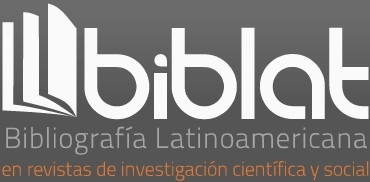Dialogue with Tim Ingold. Different contributions in the field of phenomenological anthropology
DOI:
https://doi.org/10.35494/topsem.2018.1.39.529Keywords:
ecological anthropology, Tim Ingold, education of attention, perception, environment,Abstract
The paper highlights Tim Ingold’s contribution to an ecological
anthropology and to the human sciences, particularly discussing
the concepts of perception, body, flesh and landscape, developed
in the book “The perception of environment” (1990). We consider Ingold’s later book, Being Alive (2011) as well as Ingold’s
own observations on the first version of this paper, presented
and discussed at the Culture, Perception and Environment Seminar
(2011), where Ingold personally debated articles written
in dialogue with his work. In this article, following Tim Ingold,
we start from a phenomenological posture and an interdisciplinary
dialogue with biology and psychology, to understand
the experience common to all living beings, constituted as
organisms that, in turn, do not enclose themselves in envelopes
specific identities. From these propositions, the possibilities
of being in the world are opened and education is evidenced
as mobilization of attention, putting in check the theories on the
transmission of culture and the human formation based on oppositions
such as mind and body, nature and culture. In this
way, we are faced with a radical ecological perspective that
symmetrically thinks of the place and status of organisms and
their agency in the world.
Downloads
References
ABRAHAM, David (1996). “Merleau-Ponty and the Voice of the Earth”. In Macauley, David. Minding Nature: The Philosophers of Ecology. Nueva York/Londres: The Guildford Press, pp. 82-101.
BATESON, Gregory (1972). Steps to an Ecology of Mind: Collected
Essays in Anthropology, Psychiatry, Evolution and Epistemology.
Nueva York: Ballatine Books.
BOURDIEU, Pierre (1977). Outline of a Theory of Practice. Cambridge: Cambridge University Press.
CARVALHO, Isabel Cristina de Moura (2007). “Beyond civilization and its discontents: educating, perception and the ecological cure”, Working Paper. cilas/ucsd, San Diego [Em linha]: http://
cilas.ucsd.edu/research/publications/working_papers.html
___________; STEIL, Carlos Alberto (2008). “A sacralização da
natureza e a ‘naturalização’ do sagrado: aportes teóricos para a
compreensão dos entrecruzamentos entre saúde, ecologia e espiritualidade”, Ambiente e Sociedade. Campinas, v. 11, pp. 289-305.
CSORDAS, Thomas J. (2002). “Asymptote of the Ineffable: Embodiment, Alterity, and the Theory of Religion”, Current Anthropology, vol. 45, núm. 2, pp. 163-185.
___________ (2008). Corpo/significado/cura. Porto Alegre: Editora da UFRGS.
DELEUZE, Gilles & GUATTARI, Félix (2004). A Thousand Plateaus,
Capitalism and Schizophrenia. Londres: Continuum.
GEERTZ, Clifford ([1973] 1989). A Interpretação das culturas. Río de Janeiro: Zahar.
___________ (1991). Negara. O Estado Teatro no século XIX. Lisboa: DIFEL.
HALLOWELL, Irving A. ([1955] 1974). Culture and Experience. Filadelfia: University of Pennsylvania Press.
HEIDEGGER, Martin (1995). The Fundamental Concepts of Metaphysics: World, Finitude, Solitude. Bloomington: Indiana University Press.
INGOLD, Tim (2000). The Perception of the Environment. Essays in Livelihood, Dwelling and Skill. Londres/Nueva York: Routledge.
___________ (2011). Being Alive: Essays on Movement, Knowledge and Description. Londres: Routledge.
MAUSS, Marcel (1950). « Les techniques du corps », Sociologie et
anthropologie. París : Press Universitaires de France.
MERLEAU-PONTY, Maurice (1962). Phenomenology of Perception.
Evanston: Northwestern University Press.
___________ (1964). “Eye and mind”. In Edie, J. M. The Primacy of Perception, and Other Essays on Phenomenological Psychology: the Philosophy of Art, History and Politics. Evanston: Northwestern University Press, pp. 159–190.
___________ (2007). O visível e o invisível. São Paulo: Perspectiva.
PELS, P. (1998). “The spirit of matter: on fetish, rarity, fact and fancy”. In Spyer, P. Border Fetishisms: Material Objects in Unstable Spaces. Londres: Routledge, pp. 91–121.
STEIL, Carlos Alberto; CARVALHO, Isabel Cristina de Moura; PASTORI, Érica (2010). “Educação ambiental no Rincão Gaia: pelas trilhas da saúde e da religiosidade numa paisagem ecológica”, Educação (PUCRS. Impresso), vol. 33, pp. 54-64.
___________ ; TONIOL, Rodrigo (2011). “Ecologia, corpo e espiritualidade: uma etnografia das experiências de caminhada ecológica em um grupo de ecoturistas”, Caderno CRH (UFBA. Impresso), vol. 24, pp. 29-49.
___________ ; CARVALHO, Isabel Cristina de Moura (orgs.) (2012). Cultura, Percepção e ambiente. Diálogos com Tim Ingold. São Paulo. Editora Terceiro Nome. Coleção Antropologia Hoje.
Downloads
Published
How to Cite
Issue
Section
License

Tópicos del Seminario is licensed under a Creative Commons Reconocimiento-NoComercial-CompartirIgual 4.0 Internacional License.














